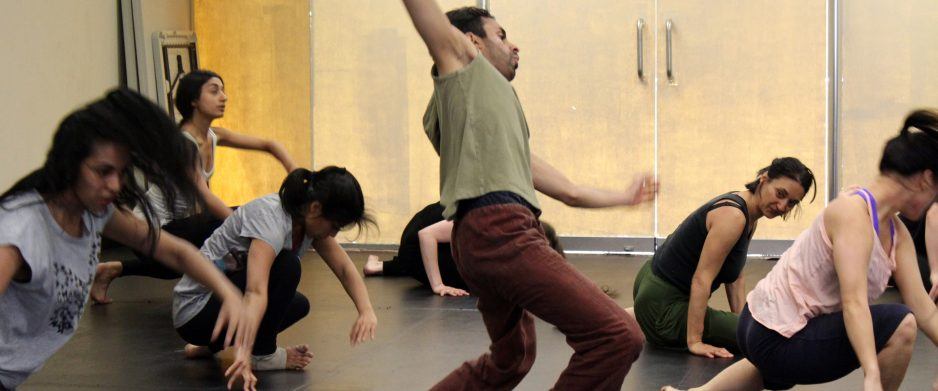Home | Blog | Aakash Odedra
Aakash Odedra
Photo Credit: Carl Sciberras
My latest foray to the theatre was an unexpected delight. Aakash Odedra performed a suite of solos titled Rising at Riverside, Parramatta, as part of the annual Parramasala Festival.
He is a whippet-slim ball of dynamite as a performer, full of sharp lines, seriously complicated punctuated rhythms with a lyrical upper torso, lines carving the air like a butter knife through a wedding cake.
As a choreographer he is young. He can’t help but show off his virtuosity. He has built into his self choreographed solo Nritta pauses that can have only been designed as moments for the audience to voice their marvel and appropriately, we did.
Three solos to go and I was thinking, ‘Surely he can’t keep up this demanding pace.’
The next solo, In The Shadow Of Man, was created on Aakash by his primary mentor Akram Kahn, who, with a similar training background, possessed an accurate assessment of his capabilities. I was captivated by the strange live grunts and yelps performed by Aakash but I wasn’t prepared for the movement score at all. This work began in a low squat with shoulder blades that popped and rolled separately from his bare back, evoking images of a caged tiger planning to attack. Reading the program notes afterward he described the process of revealing the inner animal with the Indian classical forms very often imitating animal gestures and rhythms.
The last two pieces in the suite CUT by Russell Maliphant and Constellation by Sidi Larbi Cherkaoui had a curious ecclesiastic feel about them. Russell’s shifting down lit shafts, enhanced by a forest fire from the smoke machine, caught dramatic gestures as they whipped the plumes into powdery patterns (and had asthmatics reaching for their puffers). It was mesmerising and progressed with consummate choreographic experience. Sidi Larbi’s set filled the stage with swinging light globes, the movement language a mixture of yogic vinyasas combined with recognisable contemporary phrases and Indian classical seated hand gestures.
I was in awe of the fact that Aakash has had very little formal contemporary training. Except for Sidi Larbi’s piece and his one leg extension, which was well executed, I wouldn’t have guessed. I found myself questioning the necessity for contemporary training. I have always secretly berated those that substitute dance classes as a core part of their training for yoga and pilates. I won’t go so far as to state that those other forms, which don’t address the variety of dynamic shifts and musicality can solely replace western contemporary dance training but maybe my beliefs have been too rigid.
Watching Rising I now question the rather conservative approach I have taken in creating my own technique for NAISDA. Speaking to a few particpants of the dance workshop held by Aakash on Thursday last, they were proudly vocalising the physical discomfort lingering from a very rewarding and challenging event. I am kicking myself for not taking part but know only too well the experience they described as being similar to my previous workshops with Akram Kahn.
For those who missed it, you missed it.
by Vicki Van Hout

